
In folklore, a werewolf, or occasionally lycanthrope, is an individual that can shapeshift into a wolf, either purposely or after being placed under a curse or affliction with the transformations occurring on the night of a full moon. Early sources for belief in this ability or affliction, called lycanthropy, are Petronius (27–66) and Gervase of Tilbury (1150–1228).
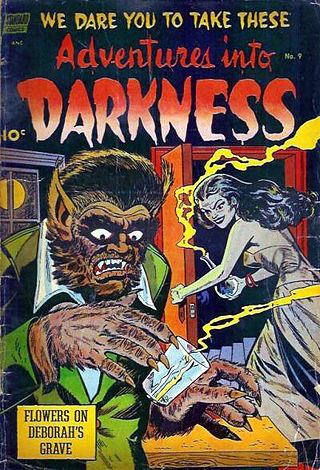
Werewolf fiction denotes the portrayal of werewolves and other shapeshifting therianthropes, in the media of literature, drama, film, games and music. Werewolf literature includes folklore, legend, saga, fairy tales, Gothic and horror fiction, fantasy fiction and poetry. Such stories may be supernatural, symbolic or allegorical. A classic American cinematic example of the theme is The Wolf Man (1941) which in later films joins with the Frankenstein Monster and Count Dracula as one of the three famous icons of modern day horror. However, werewolf fiction is an exceptionally diverse genre, with ancient folkloric roots and manifold modern re-interpretations.
Clinical lycanthropy is a rare psychiatric syndrome that involves a delusion that the affected person can transform into, has transformed into, or is, an animal. Its name is associated with the mythical condition of lycanthropy, a supernatural affliction in which humans are said to physically shapeshift into wolves. It is purported to be a rare disorder.

Werewolf: The Forsaken is a tabletop role-playing game set in the Chronicles of Darkness created by White Wolf Game Studio. It is the successor to Werewolf: The Apocalypse, the "game of savage horror" from the old World of Darkness line of games, but has moved to a more personal sort of horror, reflecting the "dark mystery" theme of the Chronicles of Darkness.

Bitten is a fantasy novel by Canadian writer Kelley Armstrong, published in 2001. It is the first book in the Women of the Otherworld series, and her first novel.
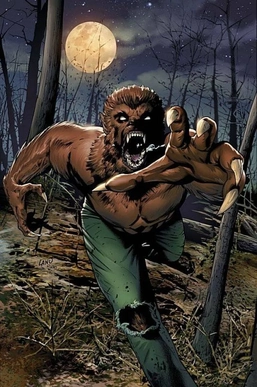
The Werewolf by Night is the name of two werewolves appearing in American comic books published by Marvel Comics. The first incarnation of Werewolf by Night, Jack Russell, first appeared in Marvel Spotlight #2. The second incarnation, Jake Gomez, first appeared in Werewolf by Night #1.

The Curse of the Werewolf is a 1961 British horror film based on the novel The Werewolf of Paris by Guy Endore. The film was made by the British company Hammer Film Productions and was shot at Bray Studios on sets that were constructed for the proposed Spanish inquisition themed The Rape of Sabena, a film that was shelved when the BBFC objected to the script. While the original story took place in Paris, the location of the film was moved to Madrid to avoid building new Parisian sets. The leading part of the werewolf was Oliver Reed's first starring role in a film and composer Benjamin Frankel's score is notable for its use of twelve-tone serialism, rare in film music. It was also the first werewolf film to be shot in color.

Werewolf is an American horror series, and one of the original shows in the Fox network's broadcast line-up during its inaugural season of 1987–1988.

Bad Moon is a 1996 Canadian-American horror film written and directed by Eric Red, and produced by James G. Robinson. The film is about a mother and son who are threatened by her brother, who struggles to overcome the curse of lycanthropy. It stars Michael Paré, Mariel Hemingway and Mason Gamble.

Werewolf of London is a 1935 horror film directed by Stuart Walker and starring Henry Hull as the titular werewolf. The supporting cast includes Warner Oland, Valerie Hobson, Lester Matthews, and Spring Byington. Jack Pierce, who is best known for creating the iconic makeup worn by Boris Karloff in the 1931 film Frankenstein, created the film's werewolf makeup. Produced by Universal Pictures, Werewolf of London was the first feature-length werewolf film.
Werewolves have featured a number of times in the long-running British science fiction television series Doctor Who and its other media tie-ins. The various media may not even be consistent with respect to each other.
David Wellington is an American writer of horror fiction, best known for his Zombie trilogy. He also writes science fiction as D. Nolan Clark.
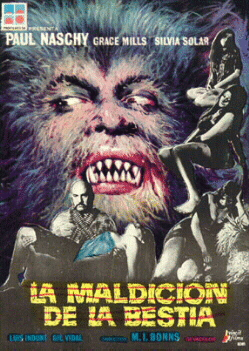
La Maldicion de la Bestia is a 1975 Spanish horror film that is the eighth in a long series about the werewolf Count Waldemar Daninsky, played by Paul Naschy. The film has also been known as The Werewolf and the Yeti, Night of the Howling Beast and Hall of the Mountain King. This film ignored the events from the earlier Hombre Lobo films and provided an all-new origin for Waldemar's lycanthropy, having the curse transmitted to Waldemar by the bites of two female werewolves. A yeti is woven into the storyline, but in this film the Yeti is not the direct cause of Waldemar's lycanthropy. Fernando Florido and Adolfo Ponte handled the special effects throughout the film.

Frostbite is a horror novel by American writer David Wellington, published in serial online in July, 2006 and in print in 2009.
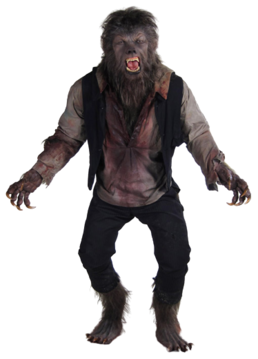
Lawrence Stewart "Larry" Talbot, also known as The Wolf Man, is a title character of the 1941 Universal film The Wolf Man and its sequels, created by Curt Siodmak. He was portrayed by Lon Chaney Jr. In the 2010 remake of the film, he is portrayed by Benicio del Toro. The Wolf Man was part of the Universal Classic Monsters ensemble.
The Innistrad block is a block of the collectible card game Magic: The Gathering, consisting of the expansion sets Innistrad, Dark Ascension and Avacyn Restored. Innistrad is a "top-down" designed block based on Gothic horror. The set's mechanics and effects take mainly graveyard themes, with a minor focus on tribal themes. The tagline for the set is "Horror Lurks Within". It has 264 cards.

In mythology and literature, a werewoman or were-woman is a woman who has taken the form of an animal through a process of lycanthropy. The use of the word "were" refers to the ability to shape-shift but is, taken literally, a contradiction in terms since in Old English the word "wer" means man. This would mean it literally translates to "man-woman".
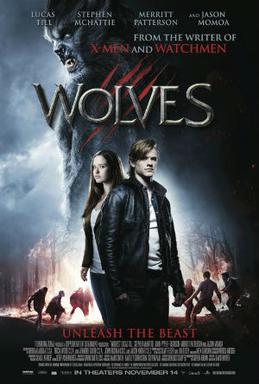
Wolves is a 2014 Canadian action horror film written and directed by David Hayter, and starring Lucas Till, Stephen McHattie, John Pyper-Ferguson, Merritt Patterson and Jason Momoa. The film received a negative critical response.

The legendary werewolves of Ossory, a kingdom of early medieval Ireland, are the subject of a number of accounts in medieval Irish, English and Norse works. The werewolves were said to have been the descendants of a legendary figure named Laignech Fáelad whose line gave rise to the kings of Ossory. The legends may have derived from the activities of warriors in ancient Ireland who were the subject of frequent literary comparisons to wolves, and who may have adopted lupine hairstyles or worn wolf-skins while they "went wolfing" and carried out raids.
The Wolf Man is the title of several horror film series centered on Larry Talbot, a man who upon being bitten by a werewolf becomes one himself, and his subsequent attempts to cure himself of his murderous condition. The franchise was created by Curt Siodmak.















